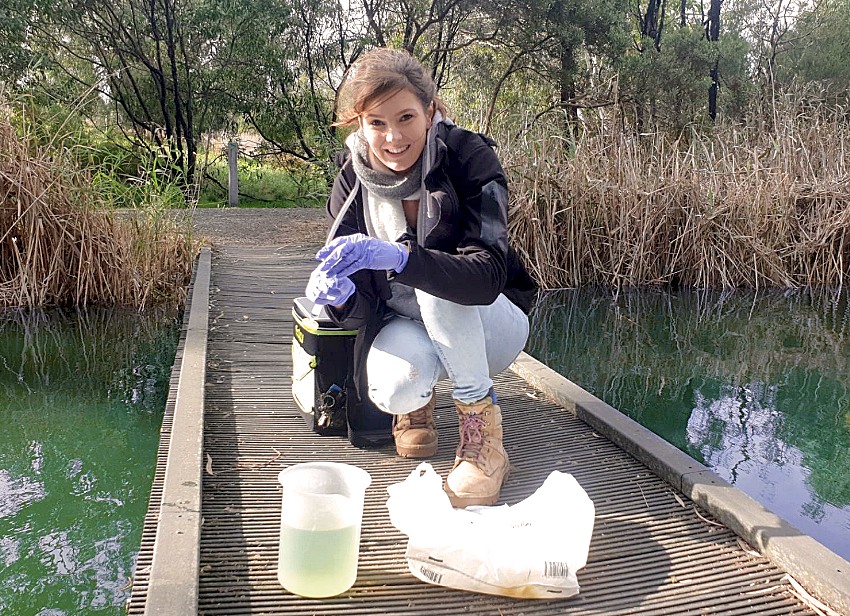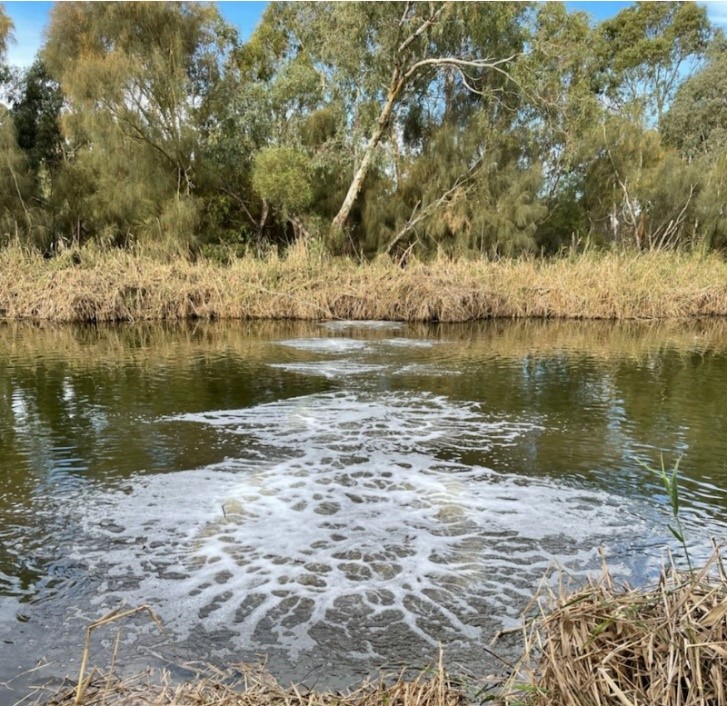Understanding and Optimising Water Quality in the Laratinga Wetlands
Background:
March 2022

The aeration trial:
The use of aerators in constructed wetlands have been found to be a successful tool to deliver dissolved oxygen to the water to increase nutrient removal and improve water quality. It has also been communicated in previous research that partial aeration (aerating for half of the day) can be more beneficial than continuously aerating the water to achieve optimal nutrient removal to further improve water quality.
Based on the findings from previous research, a trial will be conducted as part of a collaborative PhD program involving the University of Adelaide and the Mount Barker District Council. This trial has been designed to look at the current nutrient levels and water quality indicators and how these change with various dissolved oxygen concentrations using a newly installed aerator and porous tubing. The oxygen delivery is able to be controlled to compare whether partial aeration or continuous aeration is more beneficial.
The PhD program:
This work is part of a collaborative University of Adelaide industry PhD (UAiPhD) program and is funded by both the university and the Mount Barker District Council. The program incorporates numerous studies that aim to develop and trial innovative science-based strategies for optimising water quality management in the Laratinga wetlands. The first component looks at long-term analysis of the performance of the wetland to further treat domestic wastewater with various hydraulic and nutrient loadings. The second component is the aeration study mentioned above. The study that follows will focus on determining nutrient fluxes from the sediment to the water using advanced techniques, how these fluxes vary under different dissolved oxygen conditions, and how these can vary throughout the day and season. This will help to better understand internal nutrient loading to the wetland. The program will also enable further development and calibration of water quality models to enable simulation of wetland management strategies.
Outcomes
The ideal outcomes of the PhD program will be to:
- improve water quality discharged from the wetland to the Mount Barker Creek,
- increase flow through the wetland and maximize wetland discharge volumes to the Mount Barker Creek via improved management scenarios,
- have the ability to predict water quality outcomes with greater accuracy using monitoring and modelling strategies.

Danielle Allen
May 2021

